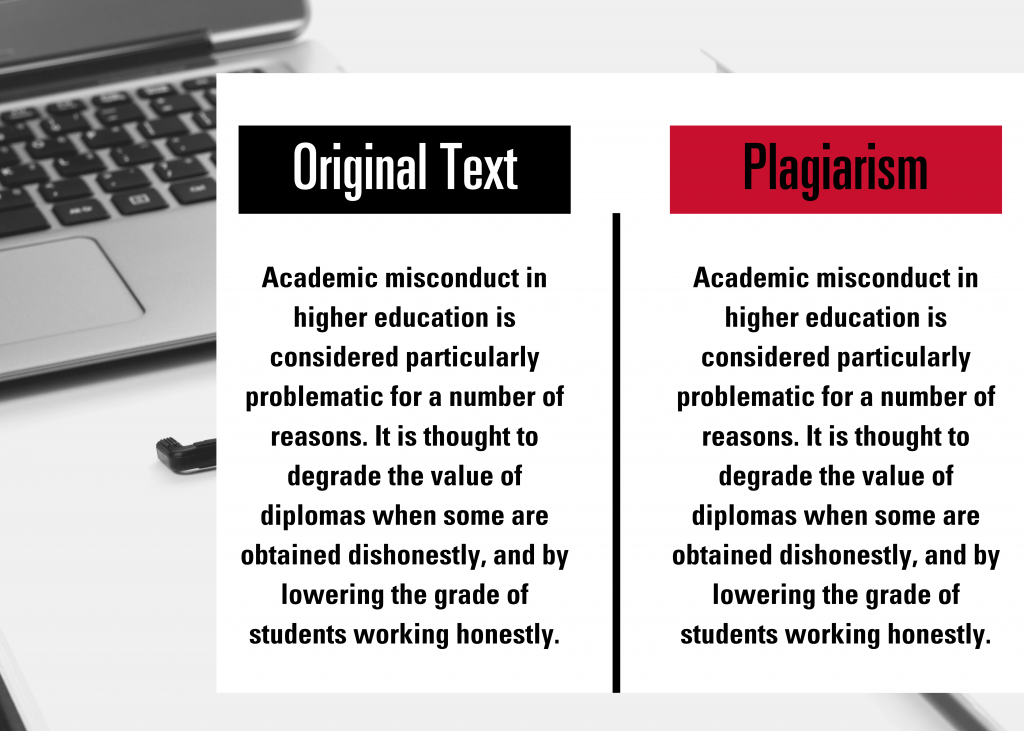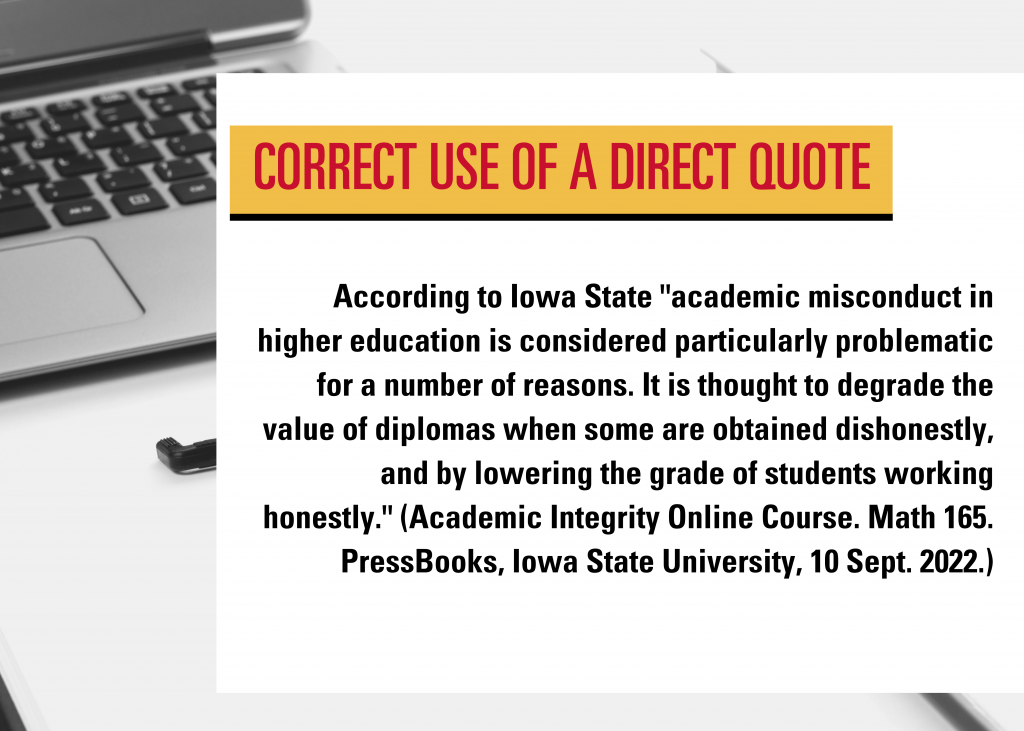Plagiarism
Plagiarism is anytime you represent someone else’s words, ideas, themes, data, expressed ideas, or artistry as your own. In other words, you are using other people’s work without acknowledging them.
Plagiarism often occurs in written work, but can also occur in other disciplines including computer programming, art, and music. The next section will take you through different types of plagiarism and steps you can take to avoid plagiarism.
Direct plagiarism is taking someone else’s work word-for-word without the use of quotation marks and citations. Anytime you use someone else’s words, you must use both quotation marks and an in-text citation to notify the reader that those are not your words.


Self-plagiarism occurs when a student submits their previous work, in whole or part, for a new course or a course retake without the permission of the faculty member. Courses are designed to facilitate learning and demonstrate mastery, and using work completed for another course without permission of the faculty does not meet these expectations.
Summarizing and paraphrasing are common areas where plagiarism occurs.
- To summarize means to condense the most essential points of someone else’s work into your own words.
- To paraphrase means to explain a certain idea or theme in your own words, almost as if you’re explaining it to a younger student. This may involve a student combining their own ideas with that of another source. Students may change the sentence structure or paper organization, use synonyms, swap clauses, or change introductory statements to give the appearance of original work. However, despite the addition of their own thoughts, any use of another’s work or ideas is still plagiarism.
- When summarizing or paraphrasing, you should never rely on simple word substitutions or try to mimic the structure and format of the work you are utilizing. In both summarizing and paraphrasing, students should be using their own words, with the appropriate in-text citation, or using quotation marks and citation for direct quotes.
- If you are not certain how to cite for direct quotes or summarizing or paraphrasing, or where you are not sure how to cite certain content (journal articles, books, online sources, media, etc.) there are resources to rely on. The Academic Success Center has staff that can assist and consult. And there are a number of online resources, including the Purdue Owl, that contain useful information about citation.

Two of the most important components to avoiding plagiarism are the proper use of quotation marks and appropriate citations. There are three main citation styles – APA, MLA, and Chicago style; your instructor will likely share what style they expect you to use for their course.
While each citation style may be formatted somewhat differently, the same principal applies: anytime you use someone else’s words, themes, or ideas, you must give credit to that person with the use of an in-text citation. It is important to remember that including a bibliography or reference page alone is not enough. You must use in text citations and quotation marks to avoid plagiarism.
Knowledge Check 1: Plagiarism
In addition to plagiarism, there are a number of other ways that students might complete their work dishonestly. As we go through the next several examples, you are encouraged to think back to the definition of academic integrity and reflect on how these types of misconduct are not in line with that definition.
Academic integrity means being honest in your academic work, being fair to others, and taking responsibility for your learning.[1] This is demonstrated by doing your own work, based on your understanding of the course content, without the use of unauthorized assistance from start to finish for all of your academic work.
- Adapted from: https://latrobe.libguides.com/academic-integrity ↵

